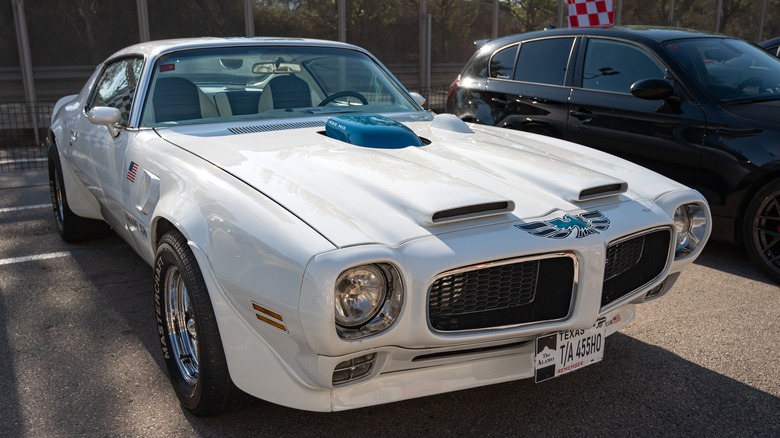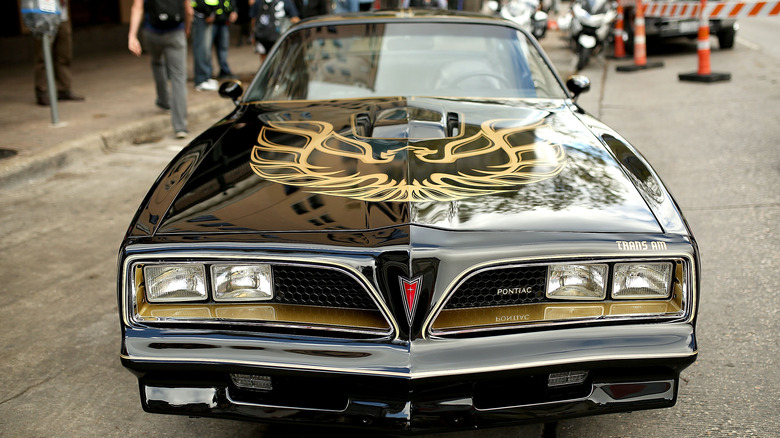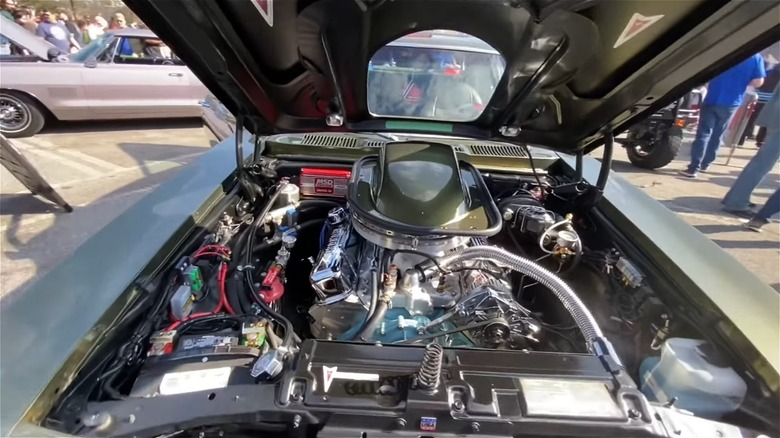Pontiac Shaker Hoods: Which Models Had Them (And Did They Really Increase Power?)
When Pontiac debuted the first Firebird in 1967, the popular engine of choice was the 400-cubic inch, 4-barrel carburetor V8 with Ram Air hood scoops. Since engine output relies heavily on the amount of air that can move through the system, induction technology, like the Ram Air, was devised to help push even more oxygen under the hood. Importantly, with Ram Air, it wasn't just more airflow that was crucial, but also the fact that it was flowing from outside of the hot engine compartment, meaning it was cooler in temperature.
If small hood scoops can provide a performance boost through induction, what about a large hole over the engine with an air intake mounted directly on top of the air cleaner? This concept became known as a shaker hood, as the scoop and air cleaner shook along with the engine, hence the name. While shaker hoods certainly looked menacing, actual performance measures only support a modest increase in output, if any at all.
Pontiac wasn't the first to incorporate a shaker hood, but the most iconic models from every generation of Pontiac Trans Am featured one. The Trans Am shaker hood included a large rear-facing scoop mounted to the air cleaner, drawing in crisp outside air. Functional Pontiac shaker hoods could be found on a few Trans Am models, one GTO, and one Can Am model.
Which Pontiacs had working shaker hoods and which models only looked like they did
There is a major difference between the 1970 through 1972 Pontiac Trans Am and the '73 through '81, even though you can spot a shaker hood on all of them. The early '70s Trans Am featured a working shaker hood, which would actually suck air into the engine. However, in 1973, the auto industry was fighting against more restrictive emissions and noise requirements, posing a significant hurdle to the working shaker hood.
Not wanting to detract from the overall esthetics of the Trans Am, Pontiac added a non-functional shaker hood in '73. While it still looks the part, the shaker hood didn't actually do anything. For example, the Trans Am from Smokey and the Bandit, which was one of the classic muscle cars that made it to the movies, includes a non-operational shaker hood.
The 1974 Pontiac GTO also sported an active shaker hood. However, this GTO model wasn't as popular with muscle car fans as it lacked the robust output of earlier models, and it was built on a different platform that more resembled a Chevy Nova.
Pontiac's final attempt at a fully operational shaker hood was in the 1977 Can Am, which was a special performance package for the LeMans. Unfortunately, a functioning shaker hood and decent performance weren't enough to overcome massive production delays, and the Can Am was halted in the same year.
What are the benefits of a shaker hood?
The one benefit nearly everyone can agree on in terms of the shaker hood is that it exudes style. While you can always take in the deep, growling tones of a classic muscle car V8, you could also see it with a shaker hood. For enthusiasts, this prominent element also made a statement, alerting those around that this particular Pontiac had some serious oomph under the hood.
Other than looks, though, the bump in output is marginal at best. While a shaker hood is superior in terms of airflow to a basic air intake setup, its ability to grab colder air might only provide a mild advantage in performance. This intake system does deliver more oxygen, which can enhance the combustion process, delivering some extra horses at faster speeds, but it won't have much effect off the starting line.
While a shaker hood did provide a slight advantage, it was also a mechanism to boost sales. Fortunately for Pontiac, it was effective even when the automaker added it only for show, such as those featured on the engines that powered the 1979 Pontiac Firebird, a top-selling year, with 117,109 units sold with shaker hoods.


